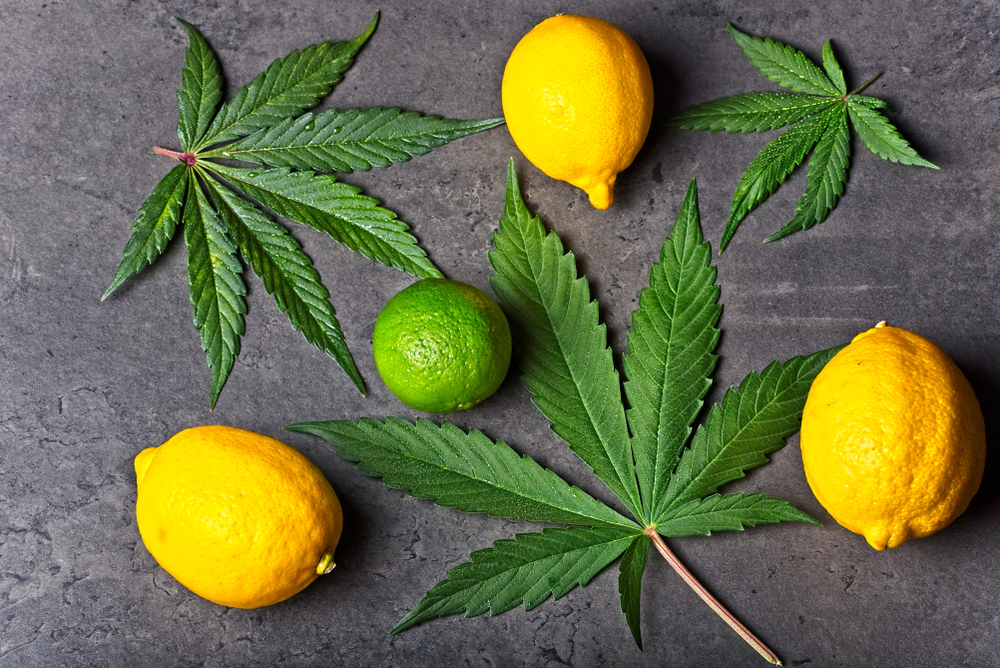Common knowledge about cannabis, CBD, and related products has been rapidly improving over the last few years, but there is still a lot to be learned. It’s awesome to see that there are so many great resources full of information for those that want to learn, and we’re excited to be able to provide that kind of content, too.
Though some people haven’t heard of the word cannabinoid, they have heard of THC and CBD. These are the two most well-known cannabinoids, so there is some level of familiarity with these substances.
Flavonoids and terpenes, on the other hand, remain largely overlooked despite the huge number of these compounds found in cannabis plants! Why is it that these compounds aren’t as talked about? Let’s take some time to understand what they are, and why you should care!
The Basic Differences Between These Compounds
Many familiar with CBD, THC, and other cannabis products don’t know much about these components and how they affect what you experience.
Cannabinoids are chemical compounds (such as the well-known CBD and THC) that interact with the endocannabinoid system in your body. When the cannabinoid binds with a receptor, it causes a specific reaction in the body.
Flavonoids are nutrients. These nutrients give cannabis plants (and lots of other living things!) their color. There are more than 20 different flavonoids that have been found in cannabis plants, and more research still needs to be done to understand their use.
Terpenes are aromatic metabolites. They are aromatic compounds that can be found in the oils of all plants. When you smell a basil plant and can recognize what it is based on the smell, that is because of the terpenes! Terpenes help to create the flavor of plants and plant-based products as well.
There are more than 20,000 different terpenes in the world. Cannabis plant strains have more than 100 identified terpenes; most plants contain at least 50 different terpenes.
The Variations of Products
One of the reasons that we find it important to learn about these different parts of cannabis and what can be extracted from the plant is because every strain has different amounts of these items. That is why there are cannabis plants with different levels of all of these things.
Depending on the way that the plant was grown, handled, and processed, the final amount of terpenes, flavonoids, and cannabinoids will be different. From there, the balance between the three might be further adjusted while creating any cannabis-based products.
When you choose a product, there is nearly always going to be more to its history than just what its name is! By gaining a better understanding of what can be extracted from the plants, you can also better understand any products that you are using.
All About Flavonoids
As mentioned, flavonoids are nutrients that create color in plants. They can create any color depending on what they are, and cannabis plants contain more than 20 flavonoids on average. Despite how their name sounds like the word “flavor,” these nutrients have no known effect on taste.
Dark purple cannabis strains may be colored by anthoxanthins or anthocyanins. Plants like berries also get their color from anthocyanins, and the specific color will depend on the pH of the plant’s growing environment.
Effects
There are cannaflavins that are found only in cannabis that have also been shown to have pharmacological effects. These flavonoids may have an effect on how things like CBD and THC are formed or function, but more research is still needed to figure this out.
We already know that one flavonoid, quercetin, that can be found in vegetables has antioxidant and anti-fungal properties. Catechins, found in cocoa and tea, may support the cardiovascular system.
We still aren’t sure exactly what many of the flavonoids in cannabis do, but we are excited to find out!
All About Terpenes
As mentioned, terpenes help to create the aroma and flavored experienced when perceiving a plant or plant-based product.
You might already be familiar with the effects of some terpenes:
- • Humulene: Earthy. Found in basil and cloves. Suppresses appetites.
- • Myrcene: Fruity. Found in basil and lemongrass. In some strains, up to 50% of cannabis’ terpene content is myrcene. Anti-inflammatory.
- • Terpinolene: Smokey. Found in sage and rosemary. Reduces anxiety.
- • Linalool: Floral. Found in spices and flowers like lavender. Anti-inflammatory.
While it’s often the most abundant, myrcene isn’t the only terpene found in cannabis. There’s even a terpene that boosts anti-acne effects in cannabis-based skincare products.
Highs and Lows of Terpenes
One of the most interesting ways that terpenes may have a huge effect on the future of cannabis-based products and medicinal usage is because of their ability to bring out the benefits of other chemicals in the product.
There are terpenes which lower the effects of THC, a psychoactive component. This means that a strain with very high concentrations of both CBD and THC could be blended with the terpene in such a way that the powerful potency of the CBD could be harnessed without too much THC causing problems for the user.
There is still much research to be done about possibilities like this in the CBD world, and it will be very exciting to see what is discovered
Full Spectrum Benefits
As you can see, there are a lot of potential benefits that things like flavonoids and terpenes bring to the table when looking at a cannabis plant. That is why some people prefer to use full-spectrum products as they contain higher amounts of all three important items:
- • Cannabinoids
- • Flavonoids
- • Terpenes
If you’re interested in seeing the effects for yourself, trying a full-spectrum product might be a good idea.
Complementary Chemicals
While it’s true that flavonoids and terpenes don’t have as much impact in the world as CBD does right now, that doesn’t mean that these chemical substances don’t have some power. And that power is worth learning about!
As you learn more about the specific components that make up cannabis plants, you can learn more about the possibilities that may be further developed in the future. CBD oil is the most well-known chemical product right now, but other complementary chemicals may get similar products in the future!











